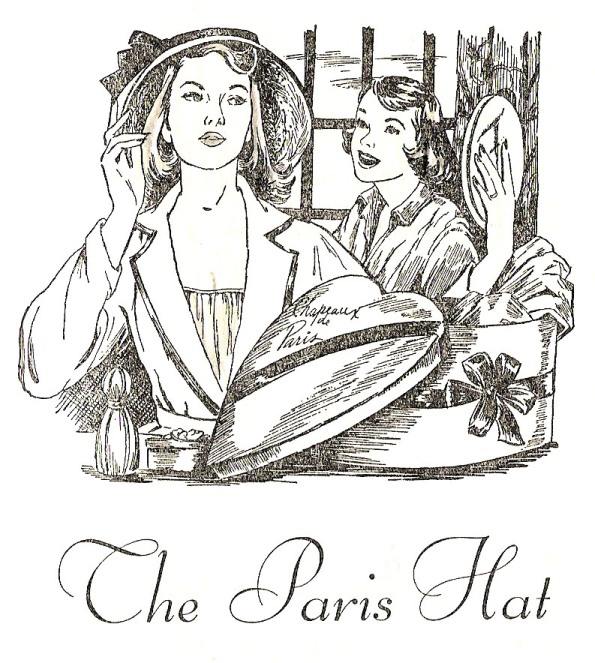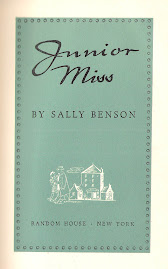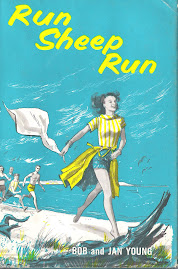 Title: Hold Fast to Your Dreams
Title: Hold Fast to Your DreamsAuthor: Catherine Blanton
Jacket: Harper Johnson
Publisher: Julian Messner, 1955Setting: Blue Mesa (probably Tucson), Arizona
Provenance: formerly the property of Memorial High School, Newark, CAFun: the Fiesta of the Arts; a Hollywood producer-type who says "by gad"; tacos
Quote: Dorothea drew back. "Emmy Lou Jefferson, what a thing for you to say! You of all people. Remember this isn't just your battle or mine. It belongs to our generation. We may fail this time and even the next. But that doesn't mean we won't keep fighting."Hold Fast to Your Dreams has a fairly familiar plot: Emmy Lou wants to dance, and in order to do so she must leave her small town for the wider world. The twist is that Emmy Lou is African-American, and this, too, would seem to make for a familiar plot. But Hold Fast to Your Dreams lacks the typical self-congratulatory tone of the social problem novel. For one thing, it was written in 1955. In 1955 the Montgomery Bus Boycott was still getting going. The Little Rock 9, the March on Washington, and the Civil Rights Act were all well in the future. (Even the play whose title I have ripped off for this post wasn't written until 1959.) In other words, there was no guarantee that segregation and institutional racism were going to disappear anytime soon. Hold Fast to Your Dreams gives us an America where attitudes vary widely and the future of what Blanton calls "the old, old argument" is unclear.
Emmy Lou takes the segregation in her hometown in Alabama, where she is her ballet teacher's only black pupil, for granted. She doesn't seek to challenge it, but to escape it, by moving to Blue Mesa, Arizona to live with her aunt and uncle. The school system in Blue Mesa is not segregated and Emmy Lou is befriended and accepted by a host of other students, both white and Hispanic. But Emmy Lou and her aunt are also turned away from a restaurant in Blue Mesa, and Emmy Lou's guidance counselor there suggests she give up the idea of becoming a professional dancer, telling her "for a Negro, it would be like batting your head against a closed door. Let's be realistic." Emmy Lou's father, aunt and uncle talk of patience as well: "...things are changing for us...we just have to learn to wait." Sit-ins and protest marches are in the future. Emmy Lou learns to swallow insults, including having the lead in the school ballet taken away from her after a parent complains.
In the end, Emmy Lou does fight, but she fights as part of a community. She is chosen for the lead in the Fiesta of the Arts ballet by a famous Hollywood director, but the head of the Fiesta (father of her friend Dorothy) refuses to sign the contract. Emmy Lou, Dorothy, and the other ballet students come together to fight for her, and it is then that Dorothy makes the remark I've quoted above: "This isn't your battle of mine. It belongs to our generation." Kind of prescient for 1955.
Emmy Lou takes the segregation in her hometown in Alabama, where she is her ballet teacher's only black pupil, for granted. She doesn't seek to challenge it, but to escape it, by moving to Blue Mesa, Arizona to live with her aunt and uncle. The school system in Blue Mesa is not segregated and Emmy Lou is befriended and accepted by a host of other students, both white and Hispanic. But Emmy Lou and her aunt are also turned away from a restaurant in Blue Mesa, and Emmy Lou's guidance counselor there suggests she give up the idea of becoming a professional dancer, telling her "for a Negro, it would be like batting your head against a closed door. Let's be realistic." Emmy Lou's father, aunt and uncle talk of patience as well: "...things are changing for us...we just have to learn to wait." Sit-ins and protest marches are in the future. Emmy Lou learns to swallow insults, including having the lead in the school ballet taken away from her after a parent complains.











No comments:
Post a Comment